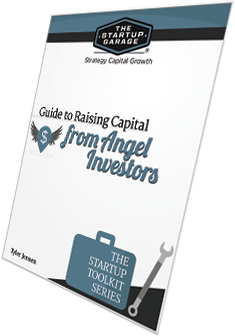What topics should I include in my pitch deck?
Every pitch should be a clear, complete and simple story. It should have a beginning — the problem identified — and an end, how much money will be needed to solve it. Chances are there is a lot of information you want to share in between these point, but don’t. There is no plot to this story, just a beginning and an end. Sharing too much information turns your pitch into noise and will change the focus of the real story you are trying to tell. You want your pitch to make sense and should be a maximum of 15 slides including the following topics (at least) in any order that flows for your story:
- Market Opportunity
- Problem definition
- Solution that you are building or have built
- Distribution and Marketing—Do you have traction; how to build traction?
- Competition
- Team
- Demo
- Execution
- Business model and financials investment requirement
These topics should be broken down into five blocks
- The Team
- The Problem
- The Solution
- The Market
- The Financials
Ask yourself the following questions, because investors sure will be, to know exactly what you should include in your story.
Is your team committed, on-board, and performing?
You may have the next Steve Jobs as your co-founder, but it is important that every team member is completely dedicated and delivering. You want a team that is with you before you even get a cent from anyone. It shows that they are just as passionate as you about the company and are confident that your product will succeed. If you cannot convince a group of your peers that you have the next best thing, there is no way investors will be on your page. Most importantly, you must prove and validate that your team will deliver.
Is the market large and growing?
It is important you can name the market and have trustworthy numbers because nobody wants to gamble in a stale, shrinking market. Growth should be expressed in terms of CAGR It is better to have numbers you have found on your own through speaking with clients/potential clients, conducting a survey etc.
Do you actually solve a problem or are you looking to find a problem?
A solution without a clearly defined problem is a red flag for investors. Knowing the ins and outs of your problem is going to help you find your target market and define your market potential. When you are pitching this part of your deck, the audience should be engaged and confirming what you are saying. If this is not happening and you are getting blank stares, you should be concerned.
Do I need to bring my product or demo?
Yes. Whether this is the actual product, or a mockup—you must show it! Here are some tips: If you don’t have traction, show the product; if you don’t have the product, show a demo or prototype; if you don’t have the prototype or demo, show mockups; if you don’t have mockups, make sure you are extremely prepared! Your product or demo should be shown when you explain the problem and start explaining the solution. Use your co-founder to click through the slides while you are showing the product, or vice versa.
Does your solution sound credible? You must show that you have tested the solution you are giving them. And more importantly, that you have tested the possible adoption of your solution by your customer.
What is your lead time on the competition?
Depending on the industry, this is going to vary. If your product is patentable, then you already have an advantage. You want to make sure you know your competition and that your lead time and business model are disruptive enough, that your immediate competition will not be able to keep up.
How will you get your product distributed?
The chance that your distribution tactics will get you a huge number of followers overnight is slim to none. This slide should give the investors the sense that you know how distribution models work and you are more than capable of choosing the right one. Many people struggle with this part of the pitch deck, and in the presentation this time will most likely be more of a discussion, moderated by you, where it is necessary you write down every word and suggestion said.
How will you make money or reach mass adoption?
More often than not, you will not be making money as projected in your first business model. You want to explain your assumptions, be very honest, transparent, and take criticism. You should have your model written out to where you have given yourself room to make changes and want to show that you are willing to.
Can you execute?
Say what you do, do what you say. If you tell investors you will have something done by the next meeting—have it done, otherwise you will not be taken seriously and you have failed.
Want To Learn More?
Download our free Raising Capital from Angel Investors eBook.
This guide will walk you through the process of obtaining seed capital for your startup. This book includes:
- An overview of the angel investor process and who they are
- The milestones angel investors look for when evaluating your business
- Strategies for finding the angels best fit for your startup
- How to nurture the relationship, prepare for the meeting and deliver the pitch
- Rounding out the details and preparing for the future



